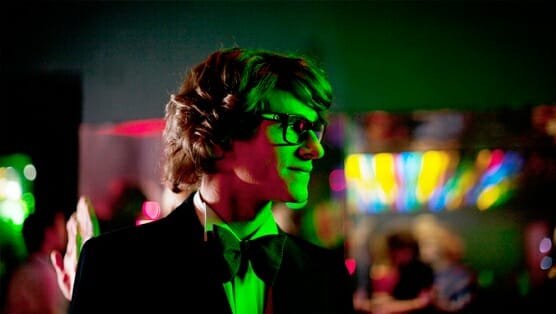Saint Laurent

Yves Saint Laurent is credited with introducing haute couture to style-conscious women everywhere. One of the most influential designers of the 20th century, he opened the first ready-to-wear designer boutique, redefining society’s concept of high fashion by incorporating masculine fits and dramatic angles into the more classically feminine designs of his contemporaries. Saint Laurent has inspired three films since his death in 2008, one documentary and two features—the latest from director and co-writer Bertrand Bonello (House of Pleasures, The Pornographer).
The second biopic on the late French couturist, picked up last year by Sony Pictures Classics, has been better received than the first, which came five months prior at the hands of Jalil Lespert under the Weinstein Co. Told from the perspective of Saint Laurent’s longtime business and life partner and keeper of his estate, Pierre Berge, Lespert’s Yves Saint Laurent was panned as a thin soap and a reduction of Saint Laurent’s genius. The film was blessed (or burdened) with Berge’s support, where Bonello’s Saint Laurent was condemned by Berge and the YSL empire.
The two couldn’t be more different. Bonello’s unauthorized version is a daring and lavish display, a visually stunning avalanche of sensory overkill and romanticized vapidity. Just looking at the runtimes to the years they cover gives a fair representation of their differences: Yves condenses several decades into 105 minutes, while Saint Laurent is an indulgent 150 and covers nine years, 1967-1976, when its namesake was Europe’s hottest designer.
Saint Laurent slides right into life atop the fashion kingdom. Yves Saint Laurent (Gaspard Ulliel) is already an icon, heading his own luxury fashion house and running off to Paris as necessary to “get some sleep.” His life is a revolving door of pills and gorgeous bodies, the colors rich but the fabric sheer. An early club scene, one of many, shows Saint Laurent sitting at a booth as he eyes a lithe blond (Aymeline Valade) in the corner of the dance floor, a model, already spoken for by Chanel. He approaches her about modeling an upcoming collection.
She eventually relents to his cooing requests. For “spoiled little boy” Yves Saint Laurent, earthly desires come easy, be it men in his bedroom, women on his runway, bronzed cobra heads or Matisse originals in his offices and prescription drugs for all the above. Saint Laurent won’t be facing any charges for idolizing its leading man—his fierce drug and alcohol addiction, flagrant self-involvement and rampant promiscuity are pushed to the forefront. Bonello’s every decision exposes both the brightest or darkest corners of Saint Laurent’s life—impulse over control, lust over love, self over other.
-

-

-

-

-

-

-

-

-

-

-

-

-

-

-

-

-

-

-

-

-

-

-

-

-

-

-

-

-

-

-

-

-

-

-

-

-

-

-

-








































